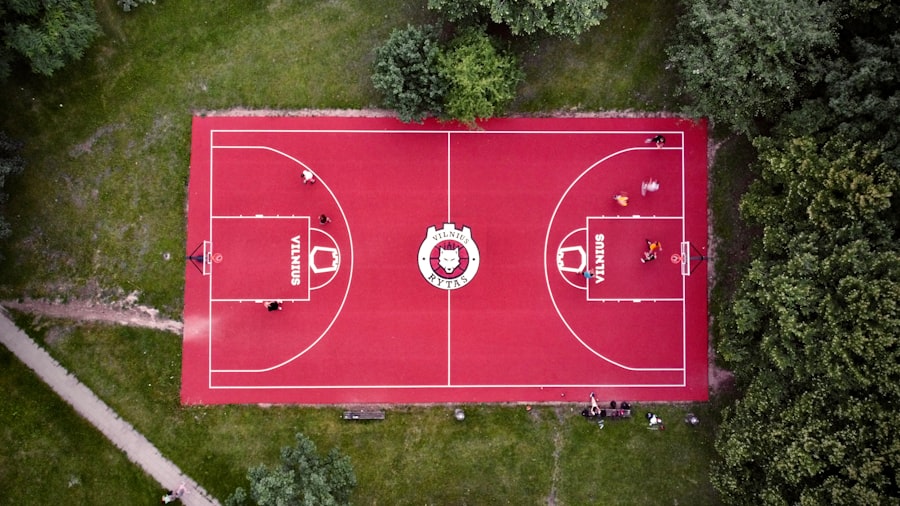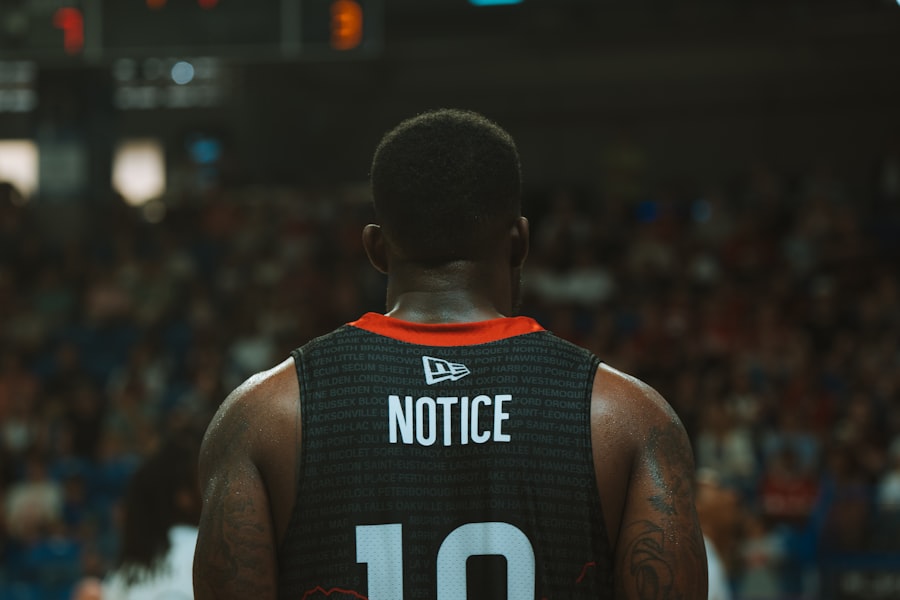In the digital age, social media has become an indispensable tool for sports organizations to connect with fans, promote events, and enhance brand visibility. A well-executed social media campaign can significantly amplify a team’s reach and engagement. For instance, during the NBA playoffs, teams often leverage platforms like Twitter, Instagram, and TikTok to share behind-the-scenes content, highlight reels, and player interviews.
The Golden State Warriors, for example, have mastered the art of storytelling through their social media channels, using engaging visuals and narratives that resonate with their audience. Their campaigns often include interactive polls and Q&A sessions that encourage fan participation, fostering a sense of community among followers. Moreover, social media campaigns can be tailored to specific events or milestones, such as anniversaries or charity initiatives.
The NFL’s “My Cause, My Cleats” campaign is a prime example of this strategy. Each year, players showcase custom-designed cleats that represent causes they are passionate about. This initiative not only raises awareness for various charities but also allows fans to engage with players on a personal level.
By sharing their stories and motivations behind the cleat designs on social media, players create a deeper connection with their audience, driving engagement and support for the causes they champion.
Key Takeaways
- Social media campaigns boost brand visibility and fan interaction.
- Player endorsements enhance credibility and attract diverse audiences.
- Fan engagement events create memorable, direct connections with supporters.
- Collaborations with influencers expand reach to new and varied demographics.
- Community outreach programs strengthen local ties and promote positive brand image.
Player Endorsements
Player endorsements have long been a cornerstone of sports marketing, providing brands with authentic connections to their target audiences. Athletes often embody the values and aspirations of their fans, making them ideal ambassadors for products and services. For instance, LeBron James has established himself as a powerful brand in his own right, partnering with companies like Nike and AT&T.
His endorsement deals not only generate substantial revenue but also enhance the credibility of the brands he represents. LeBron’s influence extends beyond basketball; he is seen as a role model for young athletes and a voice for social justice, which further amplifies the impact of his endorsements. The effectiveness of player endorsements can also be seen in the world of soccer.
Cristiano Ronaldo’s partnership with brands like CR7 underwear and Nike has transformed him into a global icon. His social media following, which numbers in the hundreds of millions, allows brands to reach vast audiences through his endorsements. The strategic alignment between Ronaldo’s personal brand and the products he endorses creates a compelling narrative that resonates with fans.
This synergy not only drives sales but also fosters brand loyalty among consumers who admire the athlete’s achievements and lifestyle.
Fan Engagement Events

Fan engagement events serve as a vital bridge between teams and their supporters, creating memorable experiences that deepen loyalty and connection. These events can take various forms, from meet-and-greets with players to interactive fan zones at stadiums. The New York Yankees, for example, host annual fan festivals that allow supporters to interact with players, participate in games, and enjoy live entertainment.
Such events not only provide fans with unique opportunities to connect with their favorite athletes but also foster a sense of belonging within the team community. In addition to traditional fan events, teams are increasingly incorporating technology to enhance engagement. Virtual reality experiences have gained popularity in recent years, allowing fans to immerse themselves in the game from unique perspectives.
The Philadelphia Eagles introduced a VR experience that simulates being on the field during a game, giving fans an unprecedented glimpse into the action. By leveraging cutting-edge technology, teams can create innovative engagement opportunities that resonate with tech-savvy audiences while also appealing to traditional fans seeking memorable experiences.
Collaborations with Influencers
| Influencer Name | Platform | Followers | Engagement Rate (%) | Campaign Type | Reach | Conversion Rate (%) | Collaboration Duration |
|---|---|---|---|---|---|---|---|
| Jane Doe | 150,000 | 4.5 | Product Review | 120,000 | 3.2 | 1 Month | |
| John Smith | YouTube | 500,000 | 6.0 | Sponsored Video | 450,000 | 5.0 | 2 Weeks |
| Emily Clark | TikTok | 300,000 | 8.2 | Challenge Campaign | 280,000 | 4.5 | 3 Weeks |
| Michael Lee | 200,000 | 5.0 | Giveaway | 180,000 | 2.8 | 1 Month | |
| Sophia Turner | Blog | 50,000 | 3.5 | Sponsored Post | 45,000 | 1.9 | 1 Week |
The rise of social media influencers has transformed the landscape of sports marketing, offering teams and brands new avenues for reaching audiences. Collaborating with influencers who have established credibility within specific niches can amplify a team’s message and broaden its reach. For instance, the Los Angeles Lakers partnered with popular YouTube creators to produce content that showcases the team’s culture and highlights key moments from the season.
By tapping into the influencers’ established fan bases, the Lakers were able to engage younger audiences who may not have been as connected to traditional sports media. Influencer collaborations can also extend beyond social media platforms into live events. The NBA has embraced this trend by inviting influencers to participate in All-Star Weekend festivities, where they engage with fans through various activities.
This approach not only enhances the event’s visibility but also creates a buzz around the league that resonates across multiple platforms. By integrating influencers into their marketing strategies, sports organizations can leverage their reach and authenticity to connect with diverse audiences in meaningful ways.
Interactive Fan Experiences
Interactive fan experiences are becoming increasingly important in creating lasting memories for supporters while enhancing their connection to teams. These experiences can range from gamified elements within stadiums to mobile apps that allow fans to engage during games. The Seattle Seahawks have implemented an interactive app that enables fans to participate in live polls during games, vote on player performances, and even access exclusive content.
This level of interactivity not only keeps fans engaged throughout the game but also fosters a sense of ownership over their experience. Moreover, teams are exploring augmented reality (AR) technologies to create immersive experiences for fans. The Chicago Bulls introduced an AR feature that allows fans to view 3D player stats and highlights by pointing their smartphones at specific areas within the arena.
This innovative approach not only enhances the live game experience but also encourages fans to share their interactions on social media, further promoting the team’s brand. By investing in interactive fan experiences, sports organizations can create memorable moments that resonate long after the final whistle.
Branded Content and Merchandise

Branded content and merchandise play a crucial role in shaping a team’s identity while providing fans with tangible connections to their favorite franchises. High-quality branded content can tell compelling stories that resonate with audiences on an emotional level. For example, the Boston Red Sox have produced documentary-style videos that highlight the history of Fenway Park and its significance to the team and its fans.
Such content not only showcases the team’s legacy but also fosters a sense of pride among supporters who identify with its rich history. Merchandise is another vital aspect of branding in sports. Teams invest heavily in creating unique apparel and collectibles that reflect their identity while appealing to fans’ desires for self-expression.
The Dallas Cowboys have successfully capitalized on this by offering a wide range of merchandise that includes everything from jerseys to home décor items featuring their iconic star logo. Collaborations with fashion designers have also emerged as a trend; for instance, the NBA partnered with streetwear brands to create limited-edition collections that appeal to younger audiences seeking stylish ways to represent their teams.
Community Outreach Programs
Community outreach programs are essential for sports organizations looking to make a positive impact beyond the field of play. These initiatives often focus on social issues such as education, health, and youth development, allowing teams to give back to their communities while fostering goodwill among fans. The Miami Heat’s “Read to Achieve” program exemplifies this commitment by promoting literacy among children through reading challenges and school visits by players.
Such programs not only benefit local youth but also strengthen the bond between the team and its supporters. In addition to educational initiatives, many teams engage in charitable activities that address pressing social issues. The San Francisco Giants have launched various outreach programs focused on environmental sustainability and community health.
Their “Giants Community Fund” supports local organizations working towards these goals while encouraging fans to participate in volunteer opportunities. By actively engaging in community outreach, sports organizations can cultivate a positive image that resonates with fans who value corporate social responsibility.
Sponsorship and Partnership Deals
Sponsorship and partnership deals are fundamental components of sports marketing strategies, providing teams with essential revenue streams while enhancing brand visibility for sponsors. These agreements often involve collaborations between teams and companies looking to leverage their association with sports for marketing purposes. For instance, Coca-Cola has long been a partner of the NFL, utilizing its sponsorship to promote products during major events like the Super Bowl while benefiting from extensive exposure through team branding.
The nature of sponsorship deals has evolved over time, with many organizations seeking more than just traditional advertising placements. Teams now look for partnerships that align with their values and resonate with their fan base. The Seattle Mariners’ partnership with T-Mobile is an example of this trend; both organizations share a commitment to innovation and community engagement.
This alignment allows them to create joint initiatives that enhance fan experiences while promoting both brands effectively. In conclusion, sports marketing encompasses a diverse array of strategies aimed at engaging fans and building brand loyalty through innovative approaches such as social media campaigns, player endorsements, community outreach programs, and more. Each element plays a vital role in shaping how teams connect with their supporters while driving revenue growth through strategic partnerships and collaborations.



